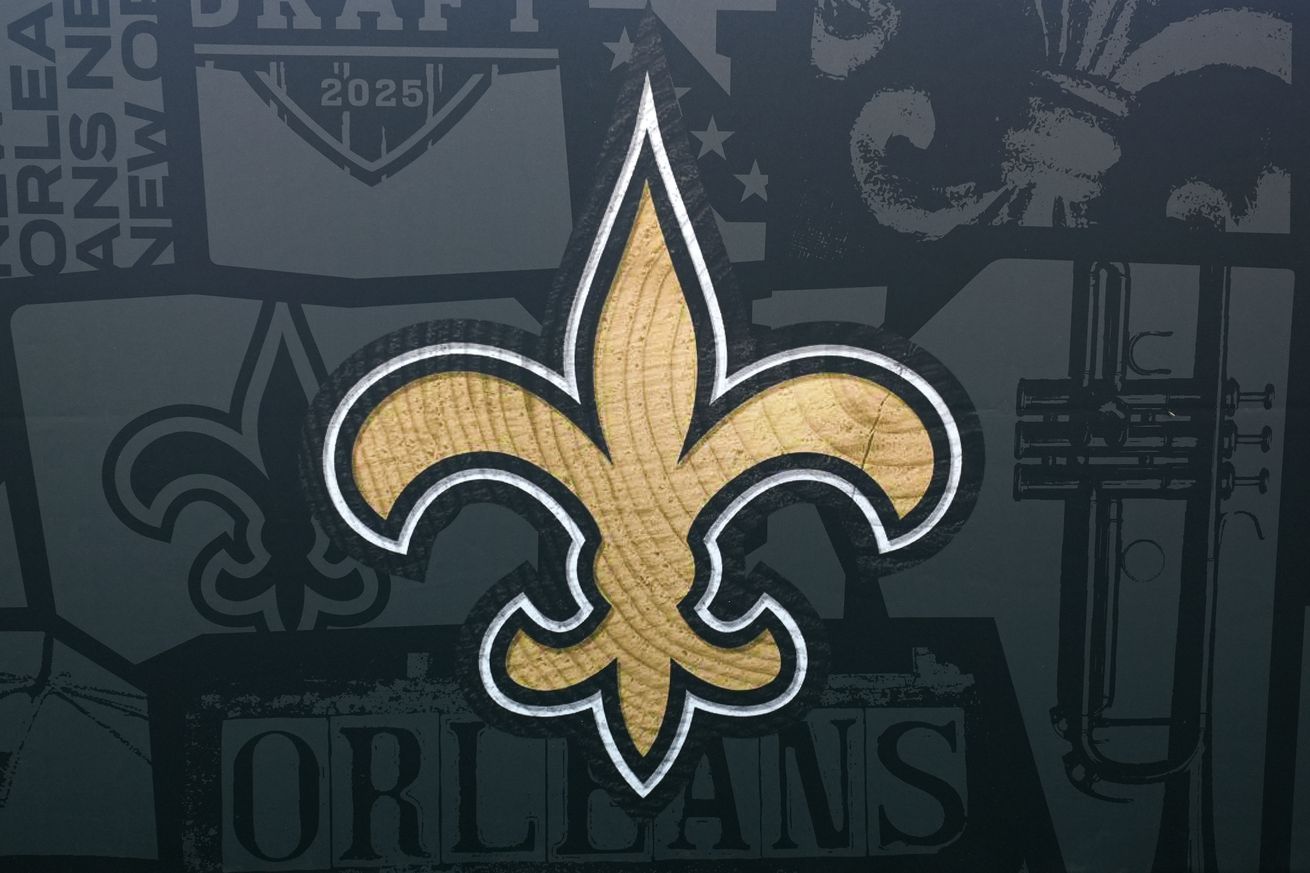
Reviewing which positions, schools, and overall picks have produced the best players.
The NFL Draft is far from an exact science. Every year players projected to be busts turn out great and players thought to be sure things are out of the league in just a few years. The New Orleans Saints have been up and down in terms of their draft success in recent years, as they have picked many key contributors to great Saints teams in the past, but recently have made some picks that have set them back a few years.
For this analysis, I looked at each pick made in the first round of each NFL Draft since 2009, and using a combination of stats, accolades, and weighted approximate value, sorted each player into four categories: great, good, mid and bust. A great pick is someone who is a multi-time Pro Bowler or All-Pro, or is considered one of the best players at their position during their time in the league. An example of a great pick made by the Saints would be Cameron Jordan. A good pick is an above average starter who plays many years and makes a Pro Bowl or two but is not usually an All-Pro level player and is never really considered to be one of the elites at their position. An example of a good pick made by the Saints would be Mark Ingram. A mid pick is a player who is an average starter or a good backup that usually doesn’t make it to a second contract with the team that drafted them but may put together one good season or last for a few years in the NFL on short-term contracts with multiple teams, but is generally considered to be a disappointment. An example of a mid pick made by the Saints would be Sheldon Rankins. A bust is a player who provides little to no impact and rarely is signed to a second contract and seldom plays meaningful snaps for any team again once they are done with the team that drafted them. An example of a bust pick made by the Saints would be Payton Turner.
509 first round picks were considered, as I did not count JJ McCarthy who we have not seen yet, and twice a first round pick has been forfeited (the Patriots in 2016 for “Deflategate”, and the Dolphins in 2023 for tampering, both coincidentally involving Tom Brady). The overall breakdown among these picks is: 17% of the selections have been great, 29% have been good, 26% have been mid, and 28% have been busts. With this breakdown in mind, we can analyze the last 16 years in terms of which positions, schools, and overall pick positions produce the highest percentage of above average or below average players.
POSITIONS
Center:
If you want a nearly guaranteed above average starter with your first-round pick, you should probably draft a Center. Granted only 10 of them have been drafted in the first round since 2009, but seven of these 10 players have all made at least one Pro Bowl in their career, with five going to at least four or more Pro Bowls. The position has also produced no busts either, as even the non-Pro Bowlers all managed to be average starters who played multiple years. The Saints will not take a Center at #9, but if they want to take one near the top of the second round to add depth behind Erik McCoy they may find good value at this position.
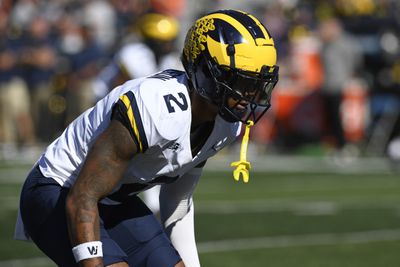
Photo by Michael Allio/Icon Sportswire via Getty Images
Cornerback:
The position that has produced the highest percentage of busts in the last 16 years has been Cornerback at 43%. With players like Justin Gilbert, Jeff Okudah, and CJ Henderson standing out, Cornerback is a high-risk position to draft, as 23 of the 53 first round CBs taken in the last 16 years have been busts, while only seven (13%) have been great (such as Pat Surtain II and the recently retired Patrick Peterson). If you combine bust and mid picks the percentage grows to 66% of Cornerbacks drafted in the last 16 years being average to below average players, the second highest percentage among all positions. This may spell trouble if the Saints are taking a look at Michigan’s Will Johnson, but if he is the first CB taken (not counting Travis Hunter) there is a much better chance he will become a good player, as 56% of the first CBs taken off the board have been either good or great picks, a 23% increase from the positions overall rate of above average players. If you can get the first Cornerback off the board, there is a good chance you have yourself a solid player. The trouble arises the deeper you get into the pool of CBs, as only one great CB and four good CBs out of 23 have been drafted as the third overall CB off the board or later in the first round.
Defensive End:
The position with the second highest percentage of busts is Defensive End at 34% (22 out of 65 players). Notable busts at the position include Dion Jordan, and Solomon Thomas. The Saints are unlikely to take a defensive end unless they trade back, as none are thought to be worth the 9th pick and the Saints have bigger needs elsewhere. When combining bust and mid picks 57% of defensive ends taken since 2009 have been no better than average. Despite the great pick of Cameron Jordan, the last two defensive ends the Saints have taken (Macus Davenport and Payton Turner) have been busts. If you want an illustration of the vast difference between a great pick and a bust however the Saints DEs are a good place to look, as Jordan has outlasted both Davenport and Turner on the Saints roster despite being drafted nearly a decade before both of them.
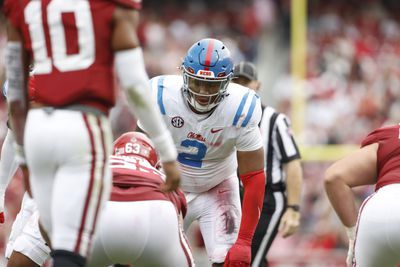
Photo by Andy Altenburger/Icon Sportswire via Getty Images
Defensive Tackle:
Defensive Tackle is close to a 50/50 shot at finding an above average player, as 22 of the 45 DTs taken since 2009 have been good or great players. Only 16% of these however have been great players such as Aaron Donald and Fletcher Cox, while 33% have been good picks such as Ed Oliver and Kenny Clark. The Saints are also unlikely to take a defensive tackle at #9 barring a slide from Mason Graham, but may look to trade up back into the end of the first round to take a player like Derrick Harmon or Walter Nolen if they see this as a position of need.
Offensive Guard:
Guard has been a very high floor position over the last decade and a half, as the position has produced the highest percentage of good picks at 47% (8 out of 17 players). However, only two guards in the last 16 years, Zack Martin and Quenton Nelson have been great picks in the first round. Guard is one of the Saints biggest positions of need, but given that only two Guards have been drafted inside the top 9 in the last 16 years, it is unlikely they will take one without a trade come draft night.
Linebacker:
The Linebacker position has produced the highest percentage of great picks among defensive players at 20%, with 11 out of the 55 taken since 2009 being some of the best players in the NFL, such as Von Miller and Luke Kuechly. The Saints desperately need another linebacker that can contribute behind Demario Davis and Pete Werner, and a player like Georgia’s Jalon Walker is certainly in play at #9. If the Saints take a linebacker at #9 he is likely to be the second one off the board, as Abdul Carter is probably going to be a top 3 pick. This could spell some trouble for the Saints, as 6 of the 11 great linebackers taken have been the first one off the board. If they really want to roll the dice however, the fourth linebacker off the board has produced a great player 33% of the time (3 out of 9 LB4s), nearly the same rate as the first linebacker off the board (36%). The other 6 LB4s taken since 2009 however have been below average, so if the Saints want a linebacker, trading back into the first round for a player such as Jihaad Campbell could be a high-risk high reward move.

Photo by Andrew Wevers/Getty Images
Quarterback:
Now for the big one. Most of the discussions around the NFL Draft each year center around evaluating the Quarterback position, a position that the Saints have needed ever since Drew Brees retired four years ago. Over the last 16 years, just 16% (8 out of 51) of the Quarterbacks drafted in the first round have been great picks, while 31% (16 out of 51) have been busts. The Saints may be eyeing a Quarterback with the 9th overall pick now that we know Derek Carr will not be healthy this year (and may be on his way out regardless). Whether it be Jaxson Dart or Shedeur Sanders, the Saints will have to beat the trend if they take the second Quarterback off the board, as just 36% of the QB2s drafted since 2009 have been above average compared to 56% of QB1s. Notable second Quarterbacks taken include players like Tim Tebow, Johnny Manziel, Daniel Jones, and Zach Wilson, but also Patrick Mahomes, and most recently Jayden Daniels and CJ Stroud. If Sanders or Dart is the pick, the Saints will have drafted a Quarterback in the 1st round for the first time since taking Archie Manning 2nd overall in 1971, coincidentally also as the second Quarterback off the board, and who went on to have the best career of any first round Quarterback that year.
Running Back:
Running Back is the only non-offensive line position that has produced more than 50% above average players in the first round since 2009 (54% or 13 out of 24 players). Players like Christian McCaffrey, Saquon Barkley, and Jahmyr Gibbs were all slam dunk picks in the top 12, despite the position seemingly losing value over the past few years. There have been a few guys who could be considered busts, but most of those were taken with late picks, with the only real bust taken before pick 27 being Trent Richardson. If the Saints have the chance to draft Ashton Jeanty at #9, they should seriously consider taking it. He would be a great fit next to Alvin Kamara, who’s best years came when he had Mark Ingram as a running mate. Being able to split touches with Kamara would help alleviate one of the few knocks on Jeanty which was his high usage rate in college, as well as make things easier on any new or inexperienced QB the Saints may have to use this year by having two elite runners lining up next to him.
Ashton Jeanty rushing TDs but they keep getting better pic.twitter.com/b16Aoslvxb
— House of Highlights (@HoHighlights) January 7, 2025
Safety:
Safety, like Cornerback, is another position that produces a high amount of below average players with not many great players coming out of the first round since 2009. There have been plenty of solid players like Jamal Adams, Malcolm Jenkins, and Kareem Jackson being taken in the first round, with elite players like Earl Thomas, Kyle Hamilton, and Minkah Fitzpatrick being the best of the best. But the bad far outweighs the good, with 65% of Safeties selected in the last 16 years being no better than mediocre. Despite this, the trouble really only comes after the first Safety is off the board, with 54% of the first Safeties taken being above average, and plummeting to 30% of the second Safety and just 14% of the third Safeties taken being above average. The Saints addressed their immediate need at Safety with the signing of Justin Reid, but could still use some depth and youth at the position. With that being said, it is unlikely they will take one at #9, but players like Malaki Starks or Nick Emmanwori could be potential high value picks if they trade up for a late first round pick.
Offensive Tackle:
The position that has seen the most players taken in the first round since 2009 is Offensive Tackle, with 74 OTs being selected in the first round in the last 16 years. It is the only position that has seen more than seven total players taken in one first round, as last year nine of them (including Taliese Fuaga) were taken within the first 29 picks. Despite the high volume, the position does tend to hit more often than not, with 55% of Offensive Tackles selected being above average. With the retirement of Ryan Ramczyk, the Saints may be in play for a tackle at #9, but given the recent investment in Fuaga and the improvement of Trevor Penning last season I would be surprised if they take another tackle at #9.
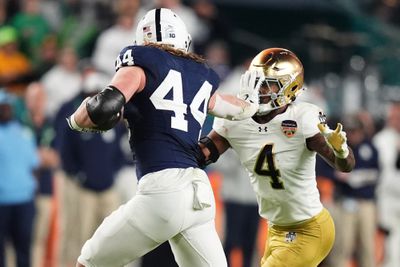
Photo by CFP/Getty Images
Tight End:
The Tight End position has produced the fewest amount of above average players of any over the last 16 years, as 85% have proven to be no better than average. Only Brock Bowers and Trey Hockenson have produced at a high level, while players like OJ Howard and Hayden Hurst have been disappointments. Most of the best Tight Ends in the NFL, such as Travis Kelce, George Kittle, Trey McBride, and Sam LaPorta, have been taken after the first round. This could be a warning sign if the Saints were to take Tyler Warren at #9. However, despite the high volume of mediocrity among first round Tight Ends, the four drafted inside the top 13 (Bowers, Hockenson, Kyle Pitts, and Eric Ebron) all turned out to be Pro Bowlers.
Wide Receiver:
The second-most abundant position is also the one that has produced the highest number of great picks in the first round, with 14 first round receivers proving to be elite players. Players like Justin Jefferson, Ja’Marr Chase, and CeeDee Lamb are some of the top options in the league right now, while past players like Julio Jones, AJ Green, and DeAndre Hopkins all could be headed for the Hall of Fame. The position has seen its fair share of busts however, and all in all, just 47% of first round receivers prove to be above average. However, the only real busts taken inside the top 9 have been Darrius Hayward-Bey, John Ross, Justin Blackmon, and Kevin White. The first two being over drafted due to low 40-yard dash times, and the others only failing due to off the field and injury issues. The 40-yard dash skew does not apply to Tetairoa McMillan, and it is unlikely that off the field or injury issues will plague him either. If the Saints elect to take the big-bodied McMillan at #9 to complement their plethora of down the field options, they will likely be getting a player with the potential to be one of the best receivers in the NFL.

COLLEGES
The top 5 colleges that have produced the most first round picks since 2009 are Alabama (47), Ohio State (27), Georgia (24), LSU (21), and Florida (20). Florida has produced the highest number of busts in the last 16 years with 10, as players such as Taven Bryan, CJ Henderson, and Kadarius Toney did not exactly pan out, while only Maurkice Pouncey could be considered a great pick. While Florida has produced the most busts, they have not actually produced the highest percentage of busts. That honor goes to TCU, who has produced five busts out of their seven players drafted meaning 71% of Horned Frogs taken in the first round since 2009 have been busts. The highest number of great picks produced is a tie between Alabama and LSU with nine, while the highest percentage of great picks belongs to Wisconsin, who’s four elite players (two Watts, Ryan Ramczyk, and Travis Frederick) out of seven total drafted mean 57% of Badgers taken in the first round have been great picks.
Among the schools (who have had 5+ players drafted since 2009) of some of the potential first round picks for the Saints, Georgia leads the way with 50% of their players drafted being above average. Michigan is next with 36% of players being above average, followed by Ole Miss at 33%, and finally Penn State at 25%. Boise State has had four players drafted since 2009, with three being mid and one being a bust, although Ashton Jeanty is by far the best prospect ever to come out of the school. Arizona has only had one first round pick in the last 16 years which came in last year’s draft. Colorado has only had two first round picks since 2009, both in 2011, and both pretty good players in Offensive Tackle Nate Solder and Cornerback Jimmy Smith.
When it comes to conferences, the Big Ten leads the way with 51% of their players drafted in the first round since 2009 being above average, followed closely by the SEC at 49%, then the ACC at 43%, with the Big 12 bringing up the rear at just 28%. Non-Power 4 schools come in at 39% of players being above average.

OVERALL PICKS
When it comes to which overall pick you want to have, the top slot of course is the most obvious choice, as 81% of players drafted first overall since 2009 have proven to be above average. It has not however produced the highest number of great players, as that distinction is a tie between 2nd overall and 5th overall with six great players drafted since 2009 (38%), while 1st overall and 10th overall have each produced five (31%). The highest percentage of below average players can be found at pick #29, as only two above average players have been found in this slot (here’s hoping Bryan Bresee will become the third).
Looking at the 9th overall pick, it has tied for the sixth highest percentage of above average players drafted with 56%, a rate higher than picks #2, #3, #7, #8, and #10. Of the last 16 #9 overall picks, 25% have been great, which is tied for the fifth highest percentage, better than picks #3 and #8, and tied with picks #4, #6, and #7. Notable great #9 overall picks include Pat Surtain II, Luke Kuechly and Tyron Smith. Only 19% of the previous 16 #9 overall picks have been busts, which is tied for the seventh lowest percentage, better than picks #3, #7, and #8, and tied with pick #2. Notable bad #9 overall picks include CJ Henderson, John Ross, and Dee Milliner. So, despite being near the end of the top 10, the Saints appear to be sitting at one of the more successful positions in the first round of the NFL Draft, and certainly one that tends to outperform its overall positioning.

TEAM SUCCESS
The Saints have made 18 first round picks since 2009 and are currently batting .500 when it comes to finding above average players. Their average overall pick has been 21st overall, with only the Vikings, Steelers, Packers, Patriots, and Ravens averaging a higher overall pick. If you take into account the number of picks they have made as well as their average overall draft position, the Saints are surprisingly one of the best drafting teams in the NFL over the last 16 years. The 21st overall pick has produced a below average player 75% of the time and an above average player 25% of the time. With this in mind, the Saints would have been expected to draft 13.5 below average players and just 4.5 above average players with their 18 first round picks. However, they have selected 9 above average players and just 9 below average players, far exceeding the expectation of their average overall pick. For perspective the Vikings average draft pick is also 21st overall, and they have taken 12 below average and 7 above average players with the 19 total first round picks since 2009.
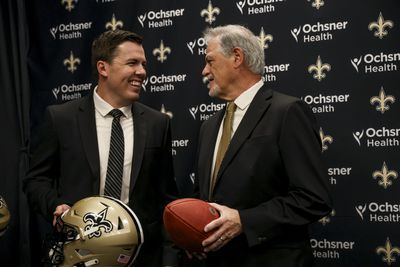
Photo by Derick E. Hingle/Getty Images
The New Orleans Saints currently find themselves at arguably the biggest crossroads they have been at since 2005. They have one of the oldest rosters in the league, and no clear path forward at quarterback after what little Derek Carr has left to give. Now armed with their first top 10 pick since 2008 (and just their fourth since 1999), they have their best chance in decades to start building towards the future or to continue pushing the envelope with the current roster that they have. It has now been 54 years since the Saints have drafted a quarterback in the first round. I am not implying that they must draft a quarterback regardless of their other needs, but if they are convinced either Shedeur Sanders or Jaxson Dart could be their quarterback of the future, I would argue the time is now to pull that trigger. If they do not think either one will be able to lead them anywhere then fine, take the best player available and hope you can find your next franchise quarterback at a later time, but the sooner you can find your guy the better.
The trends of the last 16 years of the first round give a good insight as to what kind of player the Saints may wind up with. Their eight picks in the top 15 in that period have all turned out pretty well save for Marcus Davenport, the one real time they reached with a top 15 pick. I am hoping they do not do this again and pick a player who can come in and contribute immediately or land a quarterback they can build around going forward. No more of these “linemen with upside” they have taken every year since 2017, because for every Taliese Fuaga and Bryan Bresee there is a Marcus Davenport, Payton Turner, Cesar Ruiz, or Trevor Penning. They are running out of time, and if they don’t commit to one direction or the other soon, they will be mired in mediocrity or worse for the foreseeable future. Hopefully this look back at the recent history of the first round of the NFL Draft can provide an insight as to what kind of decision they should make.
Make sure you follow Canal Street Chronicles on X at @SaintsCSC, “Like” us on Facebook at Canal Street Chronicles, follow us on Instagram at @SaintsCSC, and make sure you’re subscribed to our YouTube channel. As always, you can follow me on X at @Hayden_Reel.